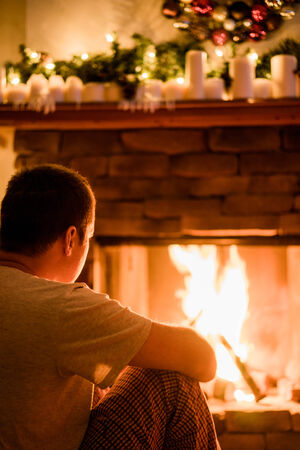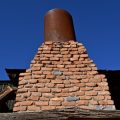Understanding UK Chimney and Fireplace Types
Chimneys and fireplaces have long been at the heart of British homes, providing both warmth and a charming focal point. Before diving into maintenance tips, it’s essential to understand the common types you’ll find in properties across the UK. Each design comes with its own set of characteristics, maintenance needs, and energy efficiency considerations.
Common Chimney and Fireplace Designs in the UK
From traditional open fires to modern wood burners and gas fireplaces, UK homeowners have several options when it comes to heating their living spaces. Here’s a quick overview of the main types:
| Type | Description | Typical Features | Maintenance Needs |
|---|---|---|---|
| Open Fireplaces | The classic British hearth, burning logs or coal directly in an open grate. | – Traditional look – Exposed flames – Requires chimney |
– Regular sweeping – Ash removal – Soot checks |
| Wood Burners (Stoves) | Enclosed metal stoves designed for burning wood efficiently. | – High heat output – Glass doors – Controllable air flow |
– Annual chimney sweep – Clean stove glass – Check seals |
| Gas Fireplaces | Modern units using gas as fuel, often resembling real flames. | – Instant heat – No need to store fuel – Cleaner operation |
– Annual service by Gas Safe engineer – Vent inspection |
Main Differences Between Fireplace Types
- Open Fires: Offer ambience but are less efficient and require more frequent cleaning due to soot build-up.
- Wood Burners: More energy-efficient, easier to control, and produce less mess than open fires.
- Gas Fireplaces: Low maintenance and convenient, but rely on professional servicing for safety.
Choosing the Right Fireplace for Your Home
Your choice will depend on your home’s age, style, fuel availability, and personal preference. Older period properties often feature traditional open chimneys, while newer builds may be fitted with contemporary gas or electric alternatives. Understanding your specific fireplace type is the first step towards effective DIY maintenance and ensuring your home remains cosy without breaking the bank.
2. Essential Tools and Budget-Friendly Supplies
If you’re keen to keep your chimney and fireplace in top shape without breaking the bank, having the right tools and supplies is essential. Luckily, many of these items are readily available at UK hardware shops or online, so you can easily put together a DIY kit that’s both effective and affordable. Here’s what every British homeowner should have on hand for basic chimney and fireplace care:
DIY Chimney & Fireplace Maintenance Kit
| Item | Purpose | Estimated Cost (GBP) | Where to Buy |
|---|---|---|---|
| Wire Chimney Brush (sized for your flue) | Clearing soot and debris from chimney walls | £10-20 | B&Q, Wickes, Screwfix |
| Extendable Rod Set | Attaching to brush for reaching up/down the flue | £15-25 | B&Q, Amazon UK |
| Ash Vacuum or Metal Shovel & Bucket | Safe removal of cooled ash from the fireplace/stove | £5-40 | B&Q, Argos, Robert Dyas |
| Heavy-duty Gloves | Protecting hands during cleaning tasks | £3-10 | Screwfix, Wilko, Homebase |
| Dust Sheets or Old Newspapers | Covering hearth and furnishings to catch dust/soot | £1-5 | Poundland, local supermarkets |
| Torch or Headlamp | Improved visibility when inspecting dark areas of the chimney/fireplace | £5-15 | Argos, Halfords, Amazon UK |
| Soot Remover Powder (optional) | Chemical aid to break down stubborn soot build-up (check suitability for your appliance) | £6-12 | B&Q, Toolstation, online retailers |
| Masonry Brush or Small Hand Brush | Sweeping up loose ash or debris from the hearth area | £2-7 | Wilko, B&Q, The Range |
| Fire Cement (for minor repairs) | Patching small cracks in firebricks or seals (not a substitute for professional repair) | £4-8/tub | B&Q, Screwfix, Wickes |
Budget-Saving Tips for UK Homeowners:
- Buy in Bundles: Look out for starter kits that include brushes and rods together – often cheaper than buying separately.
- Loyalty Schemes: Many British DIY chains offer loyalty points or discounts for regular shoppers.
- Reuse Materials: Dust sheets can be reused multiple times; old newspapers do just as well for protecting carpets.
Handy Hint:
If you’re unsure about the size of your flue brush or rod length needed, measure your fireplace opening and flue diameter before heading to the shop. Most UK chimneys are either round or square – always double-check for a snug fit to maximise cleaning efficiency!
Your Next Step:
With this affordable toolkit assembled, you’re ready to tackle routine maintenance confidently – saving money on call-outs and ensuring your home stays warm and safe throughout the British winter.
![]()
3. Routine Cleaning and Maintenance Practices
Keeping your chimney and fireplace in top condition is essential for safety, efficiency, and cost-effectiveness. Here’s a step-by-step DIY guide tailored for UK homeowners, ensuring you maintain your hearth with minimal expense and effort.
Step 1: Gather Your Tools
Before starting, make sure you have the right kit. Most items are affordable and available at local hardware shops or online.
| Tool | Purpose | Estimated Cost (GBP) |
|---|---|---|
| Chimney brush & rods | Sweeping flue | £15-£30 |
| Dust sheets | Protecting floors/furniture | £5-£10 |
| Vacuum cleaner (with HEPA filter) | Removing fine soot/ash | £0 (if owned) |
| Stiff-bristle hand brush & shovel | Clearing hearth & firebox | £5-£10 |
| Torch/headlamp | Inspecting interior | £3-£8 |
| PPE (gloves, mask, goggles) | Personal protection | £5-£10 |
Step 2: Prepare the Area
Lay dust sheets around the hearth to catch debris. Open windows for ventilation. Ensure the fireplace is completely cold before starting.
Step 3: Sweep the Flue (Chimney)
- Attach the chimney brush to extension rods.
- Insert from below (or above if safe roof access is possible).
- Sweep thoroughly up and down to dislodge soot and creosote.
- If sweeping from inside, cover the fireplace opening with a sheet to contain dust.
- Dispose of debris responsibly—avoid flushing down drains.
Tip:
You should sweep your chimney at least once a year (twice if burning wood regularly), ideally after winter when usage is highest.
Step 4: Clear the Hearth and Firebox
- Scoop out ash using a shovel. Leave a thin layer (about 1cm) if you use your fireplace frequently; it helps insulate future fires.
- Sweep remaining dust with a hand brush.
- Vacuum any fine particles for a spotless finish.
- If your fireplace has glass doors, clean them with a vinegar-water solution for streak-free results.
Step 5: Inspect for Wear and Tear
- Check for cracks in bricks or mortar.
- Look for signs of dampness or tar build-up (common in UK chimneys due to our climate).
- If issues are found, consider affordable repair kits or consult a professional for larger concerns.
Penny-Pinching Tip:
Baking soda mixed with water makes an excellent budget-friendly cleaner for stubborn stains on bricks or tiles.
Maintenance Schedule Table
| Task | Frequency (UK Recommendation) |
|---|---|
| Sweep flue/chimney | Annually (or every 6 months if used frequently) |
| Clear hearth/firebox ash | Weekly during usage season |
| Inspect for damage/dampness | Monthly during autumn/winter; before first use each year |
| Clean glass doors/tiles/bricks | As needed—usually monthly or after heavy use |
This hands-on approach not only saves you money but also gives you peace of mind knowing your home is safe and snug throughout the chilly British seasons. Remember, regular attention prevents expensive repairs down the line!
4. Spotting and Preventing Common UK Chimney Problems
Regular chimney inspections are vital for British homeowners, as the UK’s damp climate and nesting wildlife can cause a range of chimney issues. Knowing what to look for and taking early action can save you from expensive repairs or even dangerous situations. Here’s how to spot the most common chimney problems in UK homes and some practical, budget-friendly DIY prevention tips.
Top Signs of Wear or Damage in British Chimneys
| Problem | Early Warning Signs |
|---|---|
| Damp or Staining | Yellow/brown patches on chimney breast, musty smell, flaking wallpaper or paint |
| Cracked Masonry or Render | Visible cracks, loose bricks or mortar around chimney stack or fireplace |
| Soot Build-up | Black deposits around fireplace opening, poor draught when lighting fire |
| Nesting Birds (e.g., Jackdaws) | Twigs falling into hearth, bird noises in flue, blocked draught |
| Blockages (Debris/Leaves) | Smoke entering room, weak fire draught, strange smells from chimney |
How to Spot Problems Early
- Inspect your chimney stack from ground level for visible cracks or leaning after storms.
- Check inside the fireplace regularly for fallen debris or signs of moisture.
- If you notice any change in how your fire burns—like more smoke indoors—it could be a sign of blockage.
- Look out for nests in spring; jackdaws and other birds are notorious for making chimneys their home in the UK.
Simple DIY Prevention Tips
- Fit a chimney cowl or bird guard to prevent birds from nesting and reduce rain ingress.
- Keep gutters and roof valleys clear so water doesn’t run down into the chimney structure.
- If you spot minor cracks in mortar, patch them with appropriate weatherproof filler before they worsen.
- Sweep your chimney at least once a year (twice if you burn wood regularly) to prevent soot build-up and blockages. You can hire rods and brushes from most UK tool hire shops for a cost-effective DIY job.
When to Call a Professional
If you notice persistent damp, major structural cracks, or suspect a full blockage that can’t be cleared with basic tools, it’s best to contact a HETAS-registered sweep or local chimney specialist. Regular attention will help keep your UK fireplace safe, efficient, and ready for cosy evenings all year round!
5. When to Call a Professional in the UK
If you’re a DIY enthusiast, it’s tempting to tackle every fireplace and chimney job yourself to save a few quid. However, there are times when it’s safer and more cost-effective to call in a certified professional. Here’s how to recognise when expert help is needed and how to choose a reputable tradesperson in your area.
Recognising When You Need a Pro
Some chimney and fireplace issues are beyond basic maintenance and can pose safety risks if not handled properly. Look out for these signs:
| Issue | DIY or Professional? |
|---|---|
| Strong, persistent smoke indoors | Professional – may indicate blockage or flue problem |
| Soot buildup over 6mm thick | Professional – deep cleaning required |
| Cracked or loose bricks/mortar | Professional – structural repairs needed |
| Bird nests or animal intrusion | Professional – safe removal essential |
| Tarry creosote deposits (shiny, hard) | Professional – risk of chimney fire |
Why Hire a Certified Chimney Sweep or Engineer?
A certified sweep (such as those registered with HETAS or The Guild of Master Chimney Sweeps) ensures work meets British safety standards, which is crucial for home insurance and peace of mind. Qualified engineers can also spot hidden issues that might be missed during routine checks.
Tips for Finding Reputable Tradespeople Locally
- Check accreditations: Look for HETAS, OFTEC, or The Guild of Master Chimney Sweeps badges.
- Ask for references: Reliable tradespeople will have plenty of satisfied customers locally.
- Get multiple quotes: Compare prices but beware of offers that seem too good to be true.
- Request proof of insurance: This protects you if anything goes wrong during repairs or cleaning.
Quick Checklist: Choosing the Right Professional
- Do they provide a written quote?
- Are they willing to show their certification on request?
- Will they issue a certificate of sweeping (often needed for insurance)?
If in doubt, ask neighbours for recommendations—word-of-mouth remains one of the best ways to find trusted local experts in the UK. Remember, investing in proper professional care now can prevent costly problems later and keep your home cosy and safe through every chilly British winter.
6. Seasonal Preparation and Energy Savings
Properly preparing your chimney and fireplace before the colder months is key to keeping your home warm and your energy bills low. Below, we’ll walk you through affordable strategies for winter prep and practical tips to maximise efficiency, all tailored for UK homeowners.
Affordable Fireplace Preparation for Winter
Getting ready for the British winter doesn’t have to break the bank. Here’s a simple checklist to help you prepare your fireplace on a budget:
| Task | DIY Cost-Saving Tip |
|---|---|
| Chimney Sweep | Book a local sweep in late summer or early autumn—prices are often lower before peak season. |
| Inspection | Use a torch to inspect for obvious blockages or debris yourself, but always call a pro if you spot issues. |
| Seal Drafts | Apply weatherproofing strips around the chimney breast and check for gaps in window frames nearby. |
| Fireplace Door Maintenance | If you have glass doors, clean them with vinegar solution to ensure optimal heat radiation. |
| Stock Up on Fuel | Purchase seasoned wood from local suppliers in bulk during off-peak months for better deals. |
Tips for Efficient Chimney Use to Lower Heating Bills
The right habits can make your fireplace both cosy and cost-effective. Try these UK-specific energy-saving tips:
- Burn Only Seasoned Wood: Wet or green logs not only create more smoke but also produce less heat, making your fire less efficient and increasing soot build-up.
- Install a Chimney Balloon: When your fireplace isn’t in use, use a chimney balloon or draught excluder to stop warm air escaping up the flue.
- Keep Your Damper Closed: Always close the damper after the fire is completely out to prevent cold drafts and heat loss.
- Add Reflective Firebacks: Installing a metal fireback behind your fire reflects more heat into your room, reducing reliance on central heating.
- Zonal Heating: Use your fireplace as a focal point for heating main living spaces, allowing you to turn down radiators elsewhere in the house.
Quick Reference: Energy Saving Tips Table
| Tip | Savings Potential (£/year) |
|---|---|
| Chimney Balloon/Draught Excluder | Up to £65* |
| Zonal Heating with Fireplace | £50–£100* |
| Draught-proofing (DIY) | Around £20–£35* |
*Estimates based on average UK home; actual savings may vary.
Tackling these seasonal tasks not only keeps your home snug through winter but also helps reduce overall household energy costs—a win-win for comfort and budget-conscious British homeowners!


